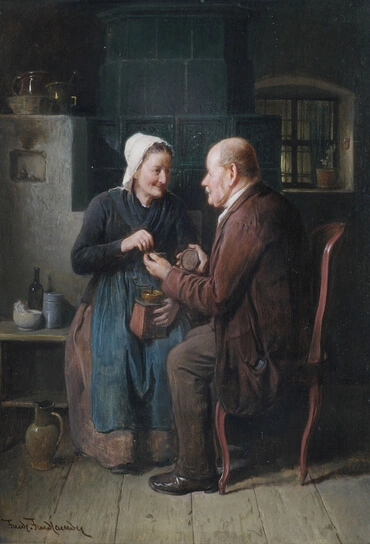Husband

In general, men are driven by intellect and women by affections, and because of this men in the Bible generally represent knowledge and truth and women generally represent love and the desire for good. This generally carries over into marriage, where the man's growing knowledge and understanding and the woman's desire to be good and useful are a powerful combination. In many cases in the Bible, then, "husband" refers to things of truth and understanding, much as "man" does. Magnificent things can happen in a true marriage, though, when both partners are looking to the Lord. If a husband opens his heart to his wife, it's as though she can implant her loves inside him, transforming his intellectual urges into a love of growing wise. She in turn can grow in her love of that blooming wisdom, and use it for joy in their married life and in their caring for children and others in their life. Many couples, even in heaven, stay in that state -- called "Spiritual" -- growing deeper and deeper to eternity. There is the potential, though, for the couple to be transformed: through the nurturing love of his wife the husband can pass from a love of growing wise to an actual love of wisdom itself, and the wife can be transformed from the love of her husband's wisdom into the wisdom of that love -- the actual expression of the love of the Lord they have built together. In that state -- called "Celestial" -- the husband represents love and the desire for good, and the wife represents truth and knowledge.
Arcana Coelestia #4325
4325. The activity of the senses in general, or general sensory activity, is divided into voluntary and involuntary. Voluntary sensory activity belongs properly to the cerebrum, but involuntary to the cerebellum. These two forms of general sensory activity are combined in the human being; yet they are distinct and separate. The fibres which issue from the cerebrum establish voluntary sensory activity in general, and the fibres which do so from the cerebellum establish involuntary. The fibres from these two sources combine together in the two appendages called the medulla oblongata and the medulla spinalis, and through these pass into the body and there shape its members, viscera, and organs. The parts which envelop the body, such as muscles and skin, and also the sensory organs, for the most part receive fibres from the cerebrum, and through these a person has sensory awareness and also movement controlled by his conscious will. But the parts which are contained within that outer envelopment or enclosure and which are called the viscera of the body receive fibres from the cerebellum, and therefore a person does not experience any feeling in these, and they are not subject to his conscious will. This shows something of what sensory activity in general is, that is, what general sensory activity is, both voluntary and involuntary. In addition it should be recognized that the general whole must exist first before any individual part can do so; that no individual part can possibly come into being and be kept in being without the general whole, and indeed that it is kept in being within this; and that every individual part is conditioned by the nature and state of the general whole. The same applies to sensory activity in the human being, and also to movements.






